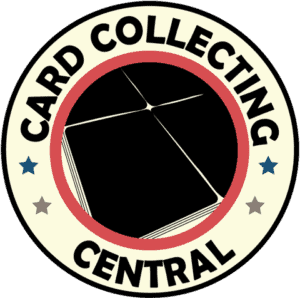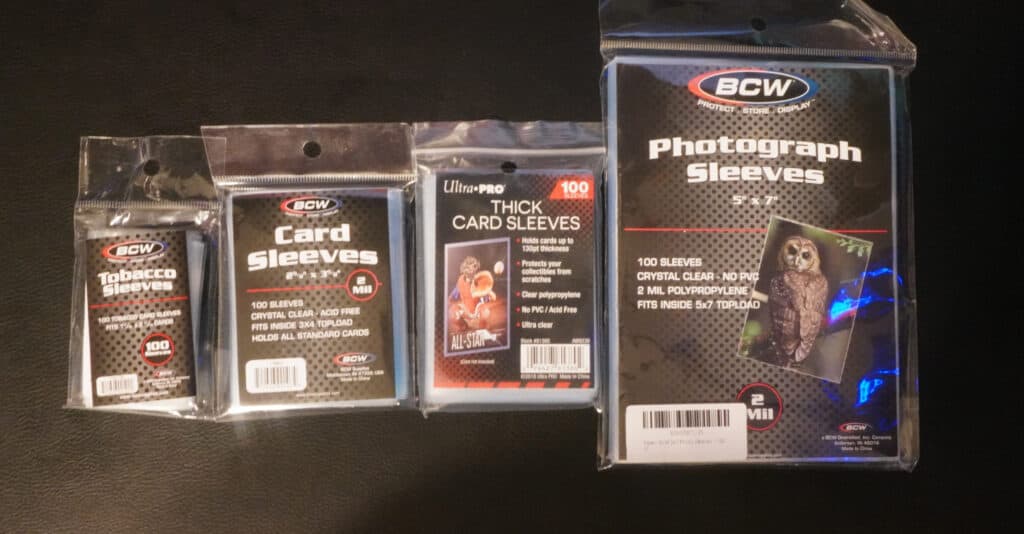
Having a correctly fitting card sleeve is almost as important as sleeving the card itself.
When the card sleeve is properly fitting, it has the best chance of providing the protection that it offers.
However, the vast amount of different cards, from the standard card width found on most trading and sports cards to the thicker memorabilia cards, and then in some cases cards that are of different dimensions either small or large can leave you wondering which sleeve size is the right one.
To choose the correct card sleeve size, you will measure the length, width, and height of the card and compare it to the dimensions given for the sleeve.
For most cards, the standard sleeve size of 2⅝ by 3⅝ will be the best choice.
Cards with a thickness of more than 1.5 mm will require a thicker card sleeve that is slightly wider and longer than the standard to accommodate the thickness.
Let’s dive into the card sleeve sizes for different cards, along with some mistakes that can be made when picking the card sleeves.
| Card Type | Card Dimensions (WxLxH) | Card Sleeve Type | Card Sleeve Dimensions |
| Standard Size | 21/2” ( 63.5 mm) x 31/2” (89 mm) x < 1.5 mm | Standard Card Sleeve | 25/8” x 35/8” |
| Thick Cards (Memorabilia/Relic) | 21/2” (63.5 mm) x 31/2” (89 mm) x > 1.5 mm | Thick Card Sleeve | 23/4” x 313/16” |
| Tobacco Cards | 1.45” x 2.65” x < 1.5 mm | Tobacco Card Sleeve | 115/32“ x 211/16” |
| Large Cards | Varies | Will Vary | Varies |
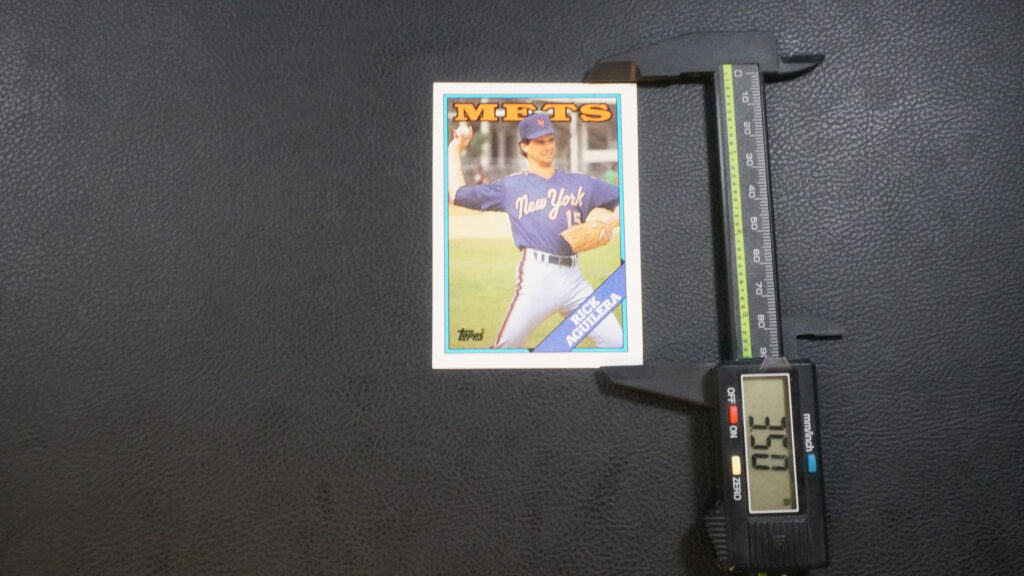
Determining the Size of Your Card and Sleeve
Over time, experience with different cards will give you an easy idea of what size the card is that you are looking to sleeve up, but if you are new to the hobby, or new to a particular type of card, it may be difficult to figure out what size your card is.
There are a couple of ways to determine what the card size is.
The easiest way is to simply measure the card.
This can be done with a caliper, ruler, measuring tape, or pretty much anything that has a standard measurement that you can lay next to the card.
If your card measures out with roughly 2.5 inches (63.5 mm) in width, and 2.5 inches (89 mm) in length, then your card is the standard length and width of most common trading cards.
The difference in sleeve sizes will then be determined based on the height of the card.
Typically anything under 1.5 mm would be considered standard, anything above would be considered thicker, like memorabilia and relic cards.
Outside of these ranges, you would be looking at a card that is a unique card that will require a more specific card sleeve size like a tobacco card sleeve, or photograph sleeve.
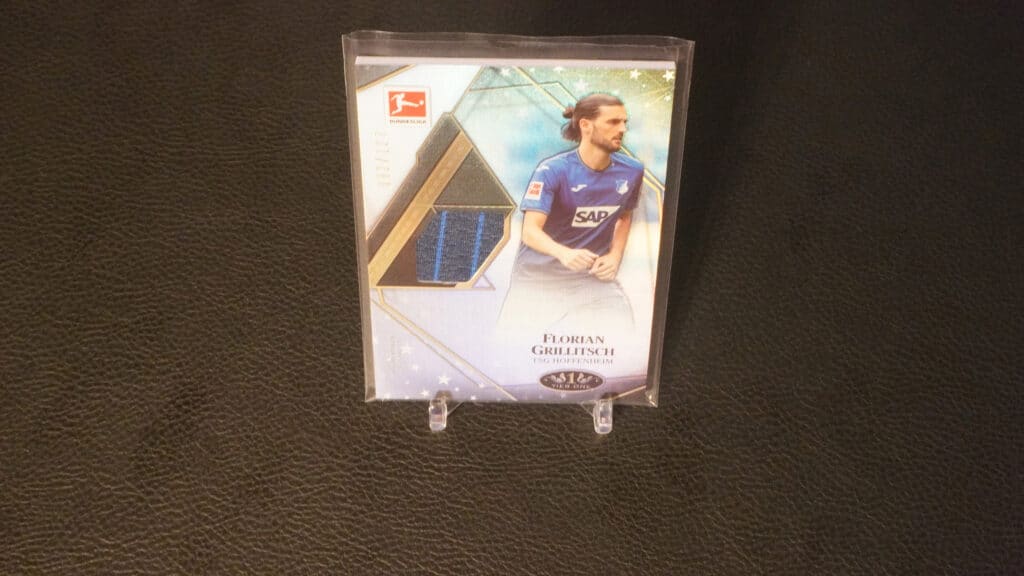
Sleeves for Typically Found Card Sizes
Though there are different cards, both in size, shape, and industries, for the vast majority of cards they will follow pretty standard sizing. Here is a look at what sizes you should be looking for most of your cards.
Standard Cards
The standard cards, which would encompass popular trading cards like Magic: The Gathering, Pokemon, and base sports cards will fall roughly in the dimensions 2.5” by 3.5” and have a thickness below 1.5 mm.
Popular brands like BCW, and Ultra Pro provide sleeves that are labeled as standard card sleeves that will fit these cards.
Memorabilia and Relic Cards
Because thicker cards like memorabilia cards require the sleeve to be taller, the sleeve must be slightly wider to accommodate the added height of the card.
In general, manufacturers of card sleeves will provide ones labeled as thick card sleeves that should be able to handle the majority of thick trading and sports cards.
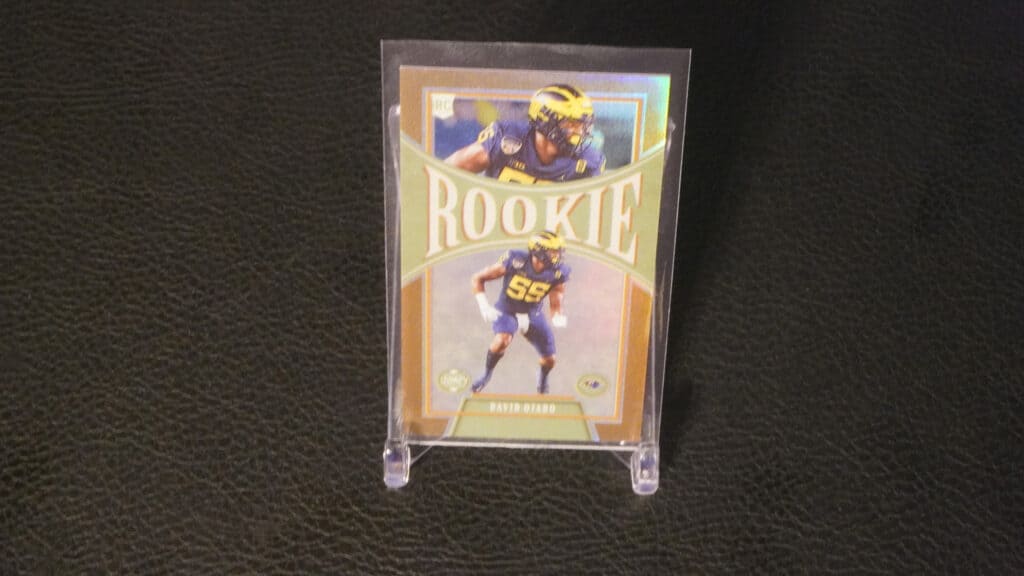
Sleeves for Other-Sized Cards
Throughout the trading and sports card spaces, there are always oddballs and slightly different card sizes that are not the norm.
However, there are almost always card sleeves that will be available to even accommodate them.
A popular size in the sports card world is the tobacco card.
These cards are made to resemble the size of cards that used to be found in tobacco packs and are much smaller than the standard card size.
Typically, these cards will be sized around 1.45” by 2.65” and have a similar depth to a standard card.
Though these cards can be placed in standard card sleeves, for the best fit you can find sleeves normally labeled as tobacco card sleeves.
These are designed to fit the smaller dimensions of the cards to have a properly fitting card sleeve.
In sports cards, there are also often in some boxes enlarged cards, commonly referred to as box toppers.
These cards will typically be larger than the standard card in both length and width.
With these cards, there isn’t a real standard sizing, so measuring that particular card will be necessary.
For larger box toppers, something like a photograph-sized card sleeve could work.
Common Mistakes When Buying Card Sleeves and Using Them
One of the most common mistakes is trying to buy card sleeves with a one-size-fits-all approach.
The issue with this, like buying thicker card sleeves so you can buy the same ones, is not cost-effective and can lead to card damage.
When sleeves are too large they will not encase the card, allowing them to easily slide out of them, and to allow dirt, dust, and anything else more easily.
This can also happen if you try to fit larger, thicker cards into smaller sleeves.
For instance, attempting to place a memorabilia, or relic card inside a standard sleeve because of not wanting the added cost of buying another pack of sleeves may be tempting, but the increased possibility of damaging the card while putting it in is not worth it.
Card sleeves should have some snugness to them when putting the card in initially, but there should only need to be minimal force to slide them in.
If you are struggling to place the card inside, having to turn the card every which way to have the sleeve able to cover both edges, the sleeve is probably too small.
Another common mistake is sleeving cards that may not need to be sleeved.
Though it is a preference and is ok to sleeve every card that you have, it does have a cost to it, and some cards may not have the worth or need to be placed in a sleeve, especially if you are storing them inside somewhere that provides some protection like a card storage box.
To learn more about which cards may not need to be sleeved, read the article I wrote here, which answers the question of whether all cards need to be put into card sleeves.
Final Thoughts
When looking at card sleeves it’s important to remember there is a reason for the various sizes, and it is not a one size fits all type of solution.
Having well-fitting, properly sized card sleeves is the best way to have the sleeves give all the benefits they can provide you in adding protection to your cards while reducing the risks of damage.
Now saying that not all card sleeves are made equal, and some may be more suited for particular card types like sports cards, trading cards, and Pokemon cards.
If interested in learning what the best card sleeves are for the particular type of cards you’re looking to sleeve up, you can read my article.
